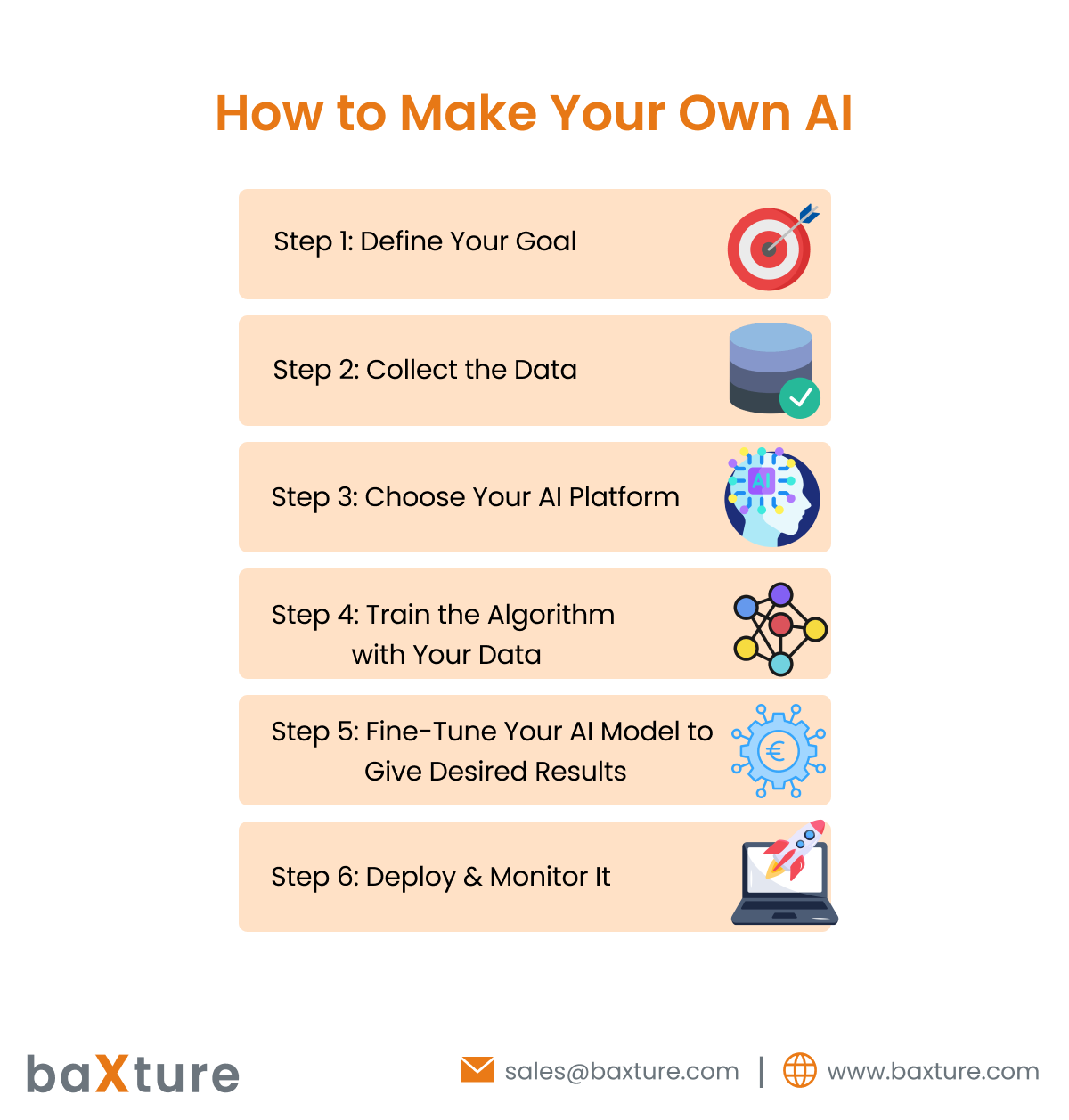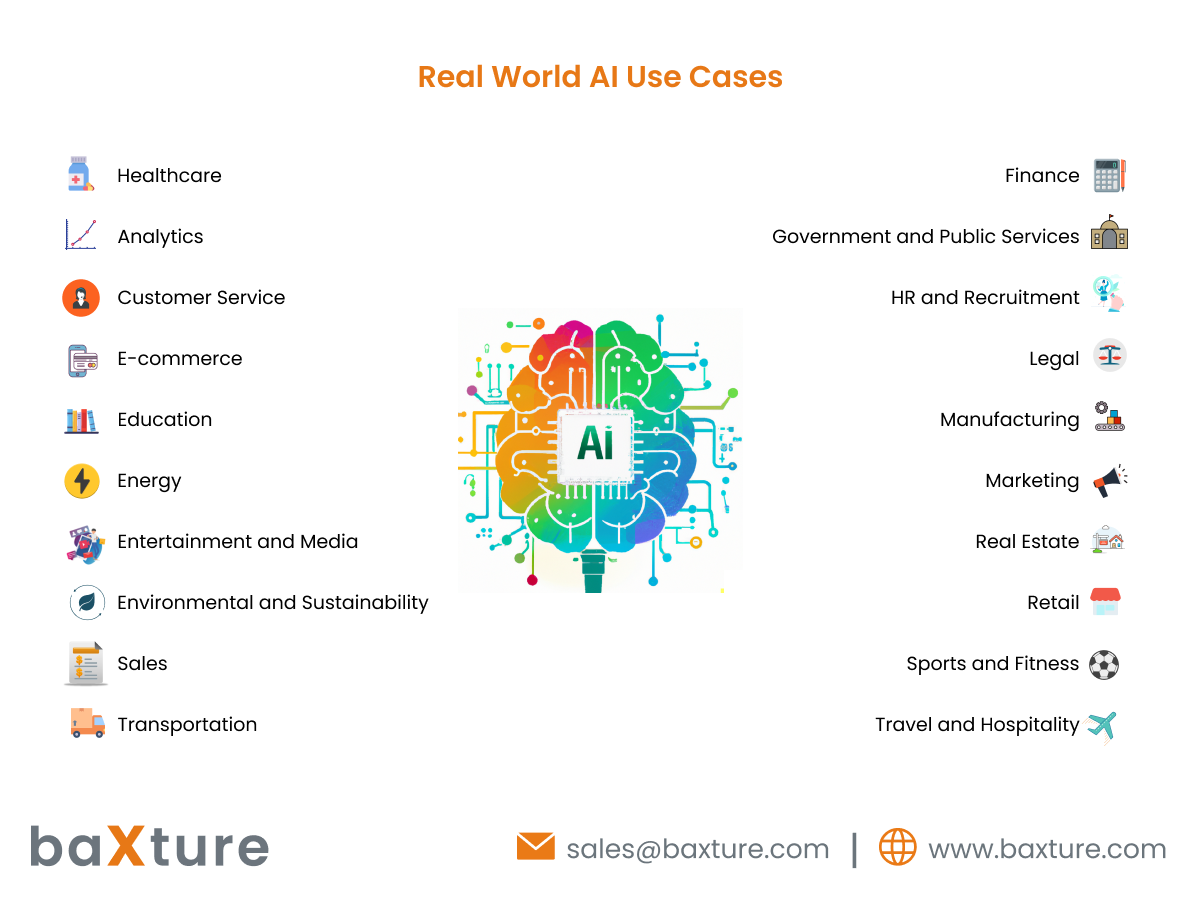Blogs
How to Make Your Own AI

In an era where technology is constantly evolving, personal assistants powered by artificial intelligence (AI) have become invaluable tools for optimizing work, enhancing productivity, and simplifying our daily lives. Creating your own AI personal assistant can be an exciting and educational journey. In this guide, we will explore the process step by step, including the necessary tools, platforms, and functions required to bring your AI creation to life.
Limitations of Existing Commercial AI Systems
Before diving into the process of creating your own AI personal assistant, it's important to understand the limitations of existing commercial AI systems. While these systems are powerful and readily available, they often come with constraints, including limited customization options, data privacy concerns, and potentially high costs. Building your own AI assistant allows you to tailor it to your specific needs and address these limitations.
Simple Steps to Create Your Own AI Personal Assistant

1. Define Your Goal
The first step in creating your AI personal assistant is to define a clear goal. Determine the tasks and functions you want your assistant to perform. This could range from simple tasks like setting reminders and answering basic questions to more complex functions like natural language processing, data analysis, or automation of specific workflows.
2. Collect the Data
Data is the lifeblood of any AI system. To train your personal assistant effectively, you need a substantial dataset. Depending on your goal, data can come in various forms, including text, audio, images, or a combination of these. Gather and curate the data relevant to your assistant's functions, ensuring it is well-structured and labeled.
3. Choose Your AI Platform
When it comes to building your AI personal assistant, you have two main options:
a. Custom Coded AI
Building your AI from scratch allows for maximum flexibility and customization. You can use programming languages like Python and libraries like TensorFlow or PyTorch to create a custom AI model. This approach is suitable for those with advanced programming skills and specific requirements.
b. Platform-Dependent AI
If you're looking for a quicker and more accessible solution, you can leverage existing AI platforms like Dialogflow, Wit.ai, or IBM Watson. These platforms offer pre-built AI components and natural language processing capabilities, reducing the coding effort required. They are a good choice for those who want to create an AI assistant without delving deeply into the technical aspects.
4. Train the Algorithm with Your Data
Regardless of the path you choose, the heart of your AI personal assistant is its ability to learn from data. If you're building a custom AI, you'll need to feed it with your dataset and use machine learning techniques to train the model. Platform-dependent solutions often have training features integrated, allowing you to teach your assistant with your data.
5. Fine-Tune Your AI Model to Give Desired Results
The initial AI model might not perform perfectly right out of the gate. Fine-tuning is essential to make your assistant more accurate and responsive. Continuously assess its performance, analyze user interactions, and adjust the model's parameters, algorithms, and training data to improve its functionality and accuracy.
6. Deploy & Monitor It
Once your AI personal assistant is ready, deploy it in your preferred environment. If you're using a platform-dependent solution, deployment is often simplified and streamlined. If you've built a custom AI, you'll need to set up infrastructure and ensure that it can be accessed by users.
Regular monitoring is crucial to maintain your assistant's performance. Analyze user feedback, track usage patterns, and continually update and improve your AI to meet evolving needs and expectations.
What is AI?
Artificial Intelligence (AI) encompasses the development of computer systems that possess the capability to perform tasks that typically require human intelligence. AI systems are designed to learn from data, adapt to new information, and make decisions or perform tasks without being explicitly programmed.
Types of AI

AI can be categorized into three primary types:
Narrow AI (Weak AI): Narrow AI is designed for a specific task, such as language translation or image recognition. It is highly specialized and lacks general intelligence.
General AI (Strong AI): General AI exhibits human-like intelligence and can perform a wide range of tasks, understand context, and learn from diverse experiences. However, it remains theoretical and has not yet been realized.
Artificial Superintelligence: This represents an advanced form of AI that surpasses human intelligence and excels in virtually every cognitive task. It is purely theoretical and remains a subject of debate and speculation.
What is Personal Assistant AI?
A Personal Assistant AI is a specialized AI designed to assist and interact with users in a natural and conversational manner. These AI systems are employed for tasks like setting reminders, answering questions, providing recommendations, and automating routine activities. They can be integrated into various devices, including smartphones and smart speakers.
Real-World AI Use Cases

Personal Assistant AI can find applications in various real-world scenarios, including:
Content Writing
AI-powered tools can assist in generating written content, such as articles, reports, and social media posts. They can provide content suggestions, improve grammar, and enhance the overall quality of written materials. One prominent example is GPT-3, developed by OpenAI, which can generate human-like text.
Speech Recognition
Personal Assistant AIs excel in transcribing spoken language into text, enabling voice commands and facilitating communication between humans and machines. Prominent examples include virtual assistants like Siri (Apple) and Google Assistant.
Computer Vision
Computer vision AI systems are proficient in interpreting and understanding visual information, enabling image recognition, object detection, and even facial recognition. These technologies find applications in security, healthcare, and autonomous vehicles.
Data Trend Analysis
AI can be used to analyze large datasets, identifying patterns and trends that enable data-driven decision-making. Industries like finance, marketing, and healthcare rely on AI for extracting valuable insights from vast amounts of data.
Requirements to Build an AI System
To embark on the journey of building your own AI system, you must consider the following requirements:
Frameworks, Tools, and Languages
Selecting the appropriate development framework, tools, and programming languages is crucial based on your project's requirements. Popular choices include TensorFlow, PyTorch, Python, and scikit-learn. TensorFlow and PyTorch are powerful deep learning frameworks with extensive community support.
Data Processing
Efficient data processing is vital for successful AI development. This involves several essential steps:
Data Collection: Gather relevant data from various sources, including databases, APIs, sensors, and web scraping. For instance, a weather forecasting AI might collect historical weather data from meteorological agencies and sensors.
Data Cleaning: Ensure data quality by removing inconsistencies, errors, and irrelevant information. Cleaning might involve handling missing data and correcting inaccuracies in the dataset.
Data Transformation: Convert data into suitable formats for modeling. Depending on your project, this could involve text, images, or numerical data. For instance, for image recognition AI, data may need to be preprocessed and resized.
Data Labeling: Assign labels to data for supervised learning tasks. In the case of a personal assistant AI, this may involve categorizing user queries, such as "set a reminder" or "provide weather updates."
Model Selection
Choosing the right AI model for your project is a critical decision. Different types of AI models include:
Regression Models: These are used for predicting numerical values, such as stock prices, temperature, or sales figures.
Classification Models: Classification models categorize data into predefined classes. For example, an email spam filter classifies emails as "spam" or "not spam."
Neural Networks: Deep learning models, such as Convolutional Neural Networks (CNNs) and Recurrent Neural Networks (RNNs), excel in complex tasks like image recognition and natural language processing.
Training
Training your AI model is a fundamental step. During training, your AI learns patterns and relationships within the data through iterative processes. Training typically involves the following aspects:
Loss Function: Define a loss function that quantifies the error between the model's predictions and the actual data.
Optimization Algorithm: Choose an optimization algorithm, like stochastic gradient descent, to minimize the loss function.
Hyperparameter Tuning: Adjust hyperparameters, such as learning rate and batch size, to optimize model performance.
Validation: Use a separate validation dataset to monitor and improve the model's performance during training.
Evaluation
Assessing your AI model's performance is crucial to ensure it meets the project's requirements. Various metrics, depending on the task, can be employed to evaluate the model's performance:
Accuracy: Measures the proportion of correct predictions.
Precision: Evaluates the proportion of true positive predictions among all positive predictions.
Recall: Examines the proportion of true positive predictions among all actual positives.
F1-score: Combines precision and recall into a single metric, offering a balance between the two.
Integration
Integrating your AI system into real-world applications requires careful planning and development. Ensure compatibility with your chosen platform, whether it's a mobile app, website, or smart device. Integration may involve creating user interfaces or APIs for seamless interactions.
Best Practices
When creating your AI system, consider the following best practices:
Thorough Documentation: Document every aspect of your AI development, from data sources and preprocessing steps to model architecture and hyperparameter choices.
Continuous Learning: Regularly update your model with new data to improve its accuracy, relevance, and performance.
Data Privacy and Security: Prioritize data privacy and security, especially when dealing with user information. Adhere to data protection regulations and best practices.
Challenges
AI development comes with various challenges that need to be addressed:
Data Quality and Quantity: High-quality data is essential for training AI models. Insufficient or noisy data can lead to poor model performance.
Bias in AI: AI systems can inherit biases from the data they are trained on, resulting in unfair or inaccurate results. Addressing bias in AI is a complex challenge that requires careful attention.
Model Complexity: Complex AI models, such as deep neural networks, often require substantial computational resources for training and inference.
Ethical Considerations: AI developers must be aware of and address ethical issues, including privacy, fairness, and transparency.
Integration
Integrating your AI system into real-world applications is a critical step that involves making your AI accessible to users. This requires consideration of the following aspects:
Platform Compatibility: Ensure your AI system is compatible with the platforms where it will be used, such as mobile devices, websites, or smart home appliances.
User Interfaces: Design user-friendly interfaces that allow users to interact with your AI system intuitively and comfortably.
Application Programming Interfaces (APIs): If your AI system is meant to be integrated with other software or services, create APIs that facilitate seamless communication and data exchange.
Checking Bias
Detecting and mitigating bias in your AI system is a crucial aspect of responsible AI development. Bias can lead to unfair or unequal outcomes, and it's essential to address it. Key considerations include:
Fairness Assessments: Conduct fairness assessments to identify potential biases in your AI system's output.
Bias Correction Techniques: Implement bias correction techniques, such as re-sampling, re-weighting, or adversarial debiasing, to reduce bias in your model's predictions.
Diverse and Representative Data: Use diverse and representative training data to reduce bias. Ensure that the data used to train your model covers a wide range of demographics and scenarios.
Considerations
When building your AI system, consider the following important factors:
User Experience: User experience is paramount. Design your AI system to offer a seamless and intuitive interaction with users. The goal is to make users feel comfortable and satisfied when using your AI system.
Data Privacy: Comply with data protection regulations and respect user privacy. Users should have control over their data, and you should handle it responsibly and securely.
Scalability: Plan for future growth and increased demand for your AI system. Ensure that your infrastructure can handle additional users and data.
Final Thoughts
Creating your own AI, particularly a Personal Assistant AI, involves understanding AI fundamentals, selecting appropriate use cases, choosing the right tools and languages, addressing data processing, model selection, training, evaluation, integration, best practices, challenges, and ethical considerations. Building a successful AI system requires careful planning, continuous improvement, and a strong commitment to providing valuable and user-friendly experiences.